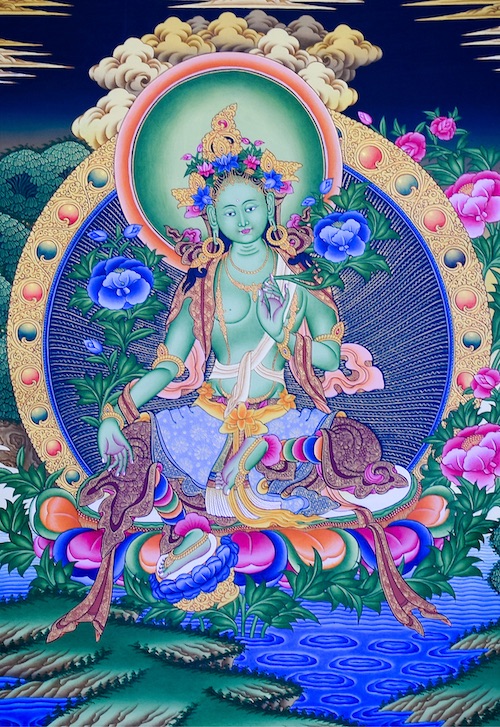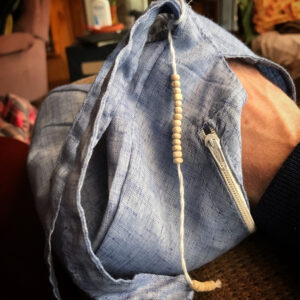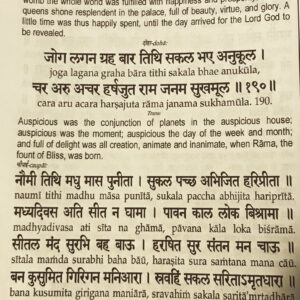 It’s been nearly a year since I posted about my daily spiritual activities, so I thought I’d offer an update.
It’s been nearly a year since I posted about my daily spiritual activities, so I thought I’d offer an update.
A few significant things have changed with the passing of 2022.
Firstly, I have pretty much parted ways with the Roman Catholic Church. I hold no ill will, and there may come a time when I will return to the practice of the Catholic Faith. For the time being, though, I find little in the American expression of Catholicism with which I wish to be in communion. I do still pray the Divine Office each day, but I no longer regularly attend Mass.
Second, I am spending much less time on esoterica. I took a very deep dive into Tarot practice in 2022. It was one of the tools that first started nudging me toward waking up, but I’m finding it less relevant in this season of my life. I still record a card draw each day, and will read for others if they ask, but I’m not putting any effort or time into study at the moment.
One of most significant additions to my spiritual life over the past year has been daily practice of Green Tara Sadhana, which I began learning in 2021, and began practicing daily on March 11th of 2022.
The other major change is that I have now fully committed to study and practice in the Kriya Yoga Tradition. I had begun formal study of the lessons from Self-Realization Fellowship in November of 2020, and have practiced several of their meditation techniques intermittently since that time. I was still largely experimental in my practice, though. Toward the end of 2022, as I began to assess and evaluate my spiritual progress, I decided that it would be best to direct most of my energy in 2023 and 2024 toward the Kriya Yoga path, and to place myself under the discipline of the teacher I most respect, Ryan Kurczak.
Morning Routine
My first activity (after washing my face and taking the dog out and feeding him), every morning, is meditation. Currently I spend about half-an-hour in Kriya Yoga meditation. The full procedure is presented in this video from Ryan.
After meditation, I like to review the Daily Word from Unity, and pray the Office of Readings combined with Lauds. Lately I’ve also been taking a quick look at the apps from Sadhguru, the Movement of Spiritual Inner Awareness, and the Gayatri Sangha.
After making entries into my gratitude journal, I work my way through the daily lesson and writing exercise from David McGrath’s excellent book The Yogi’s Way, which is a two-year survey of Patanjali’s yamas and niyamas.
Several days a week I still listen and chant along with Devadas’ livestream of Coffee and Kirtan from Brooklyn. After that, I being the work day, usually around 9 AM.
Mid Day
Some time either towards the end of the morning or the first couple hours afternoon, I do my Green Tara practice. It helps me keep perspective on everything else that happens during the day, and brings a softness and compassion to even my roughest edges.
Evening
After the work day, I pray Vespers every evening, and also spend another twenty to thirty minutes in meditation. Some days it will be the full Kriya Yoga procedure. Other days I may do something a bit less elaborate, like alternate nostril breathing and silent mantra meditation.
Study and Exercise
I’ve also been making time for exercise each day for awhile now. My wife and I take a lengthy walk with our little dog, Louie, each afternoon. Lately I’ve been getting on an exercise bike for 25 minutes a day, and during that I listen to a podcast or lesson or something edifying.
There are always several books that I’m working my way through. Some are directly related to the Kriya Yoga path, others not.
If this all sounds like it takes up a lot of time, well, it does. I’m lucky to be semi-retired and able to do it. But honestly, I could have done it throughout my full time working years as well, if I hadn’t burned off all those karmas shaking cocktails, watching mindless TV, throwing darts, playing pingpong, and listening to Dean Martin records. I enjoyed those activities at the time, but I much prefer my current daily routine nowadays. 🙂
I’d love to hear about your essential daily practices, and also any questions you may have.
 The Ongoing Presence of Neem Karoli Baba
The Ongoing Presence of Neem Karoli Baba Plant based meats have come a long way over the past few years, from the mushy crumbles of yore to something that truly approximates the texture and flavor of beef.
Plant based meats have come a long way over the past few years, from the mushy crumbles of yore to something that truly approximates the texture and flavor of beef.
 Recently I completed a course of study on
Recently I completed a course of study on  What Is Japa?
What Is Japa? Nearly every morning I still tune in to
Nearly every morning I still tune in to  Goswami Tulsidas was an Indian saint and poet who lived in the 16th Century CE. His Ramcharitmanas (the Holy-Lake of the enactments of Lord God Rama) is a retelling of the Ramayana in Awadhi. Through this, which would become one of the great works of world literature, he brought the story from Sanskrit into the vernacular of the people for the very first time.
Goswami Tulsidas was an Indian saint and poet who lived in the 16th Century CE. His Ramcharitmanas (the Holy-Lake of the enactments of Lord God Rama) is a retelling of the Ramayana in Awadhi. Through this, which would become one of the great works of world literature, he brought the story from Sanskrit into the vernacular of the people for the very first time. I’ve been wanting to try cooking Pad Thai for a long time, and finally got around to it last week. I had already researched recipes, but when I told my wife I was planning to make it, she scared up one more that was helpful in pulling together the dish.
I’ve been wanting to try cooking Pad Thai for a long time, and finally got around to it last week. I had already researched recipes, but when I told my wife I was planning to make it, she scared up one more that was helpful in pulling together the dish. This makes a tasty and hearty weeknight meal, with lots of nutrition and not a lot of fuss. I use a 5 quart stockpot from beginning to end, so there’s not a lot to cleanup. The most time consuming part is peeling and chopping the potatoes.
This makes a tasty and hearty weeknight meal, with lots of nutrition and not a lot of fuss. I use a 5 quart stockpot from beginning to end, so there’s not a lot to cleanup. The most time consuming part is peeling and chopping the potatoes.